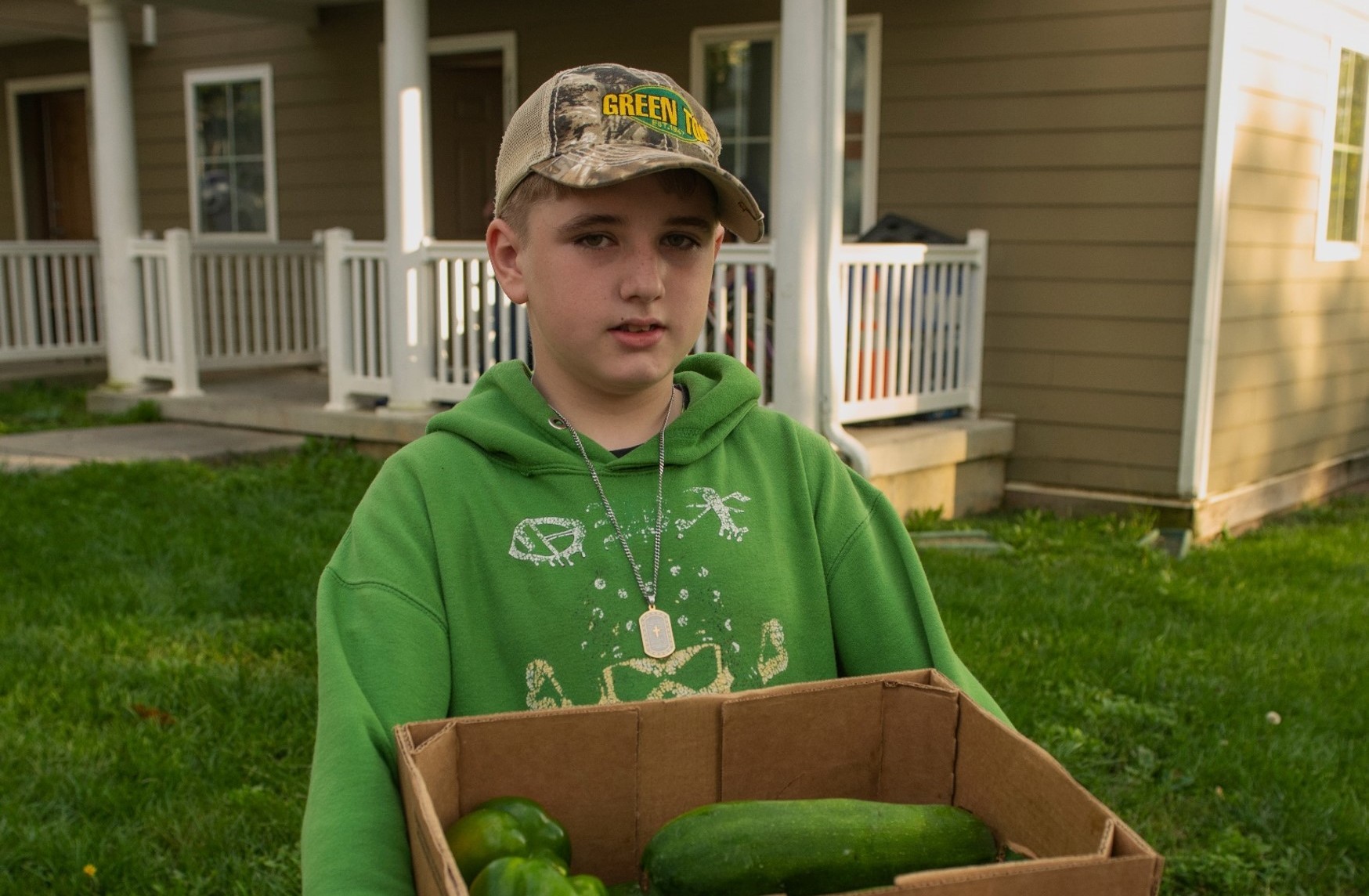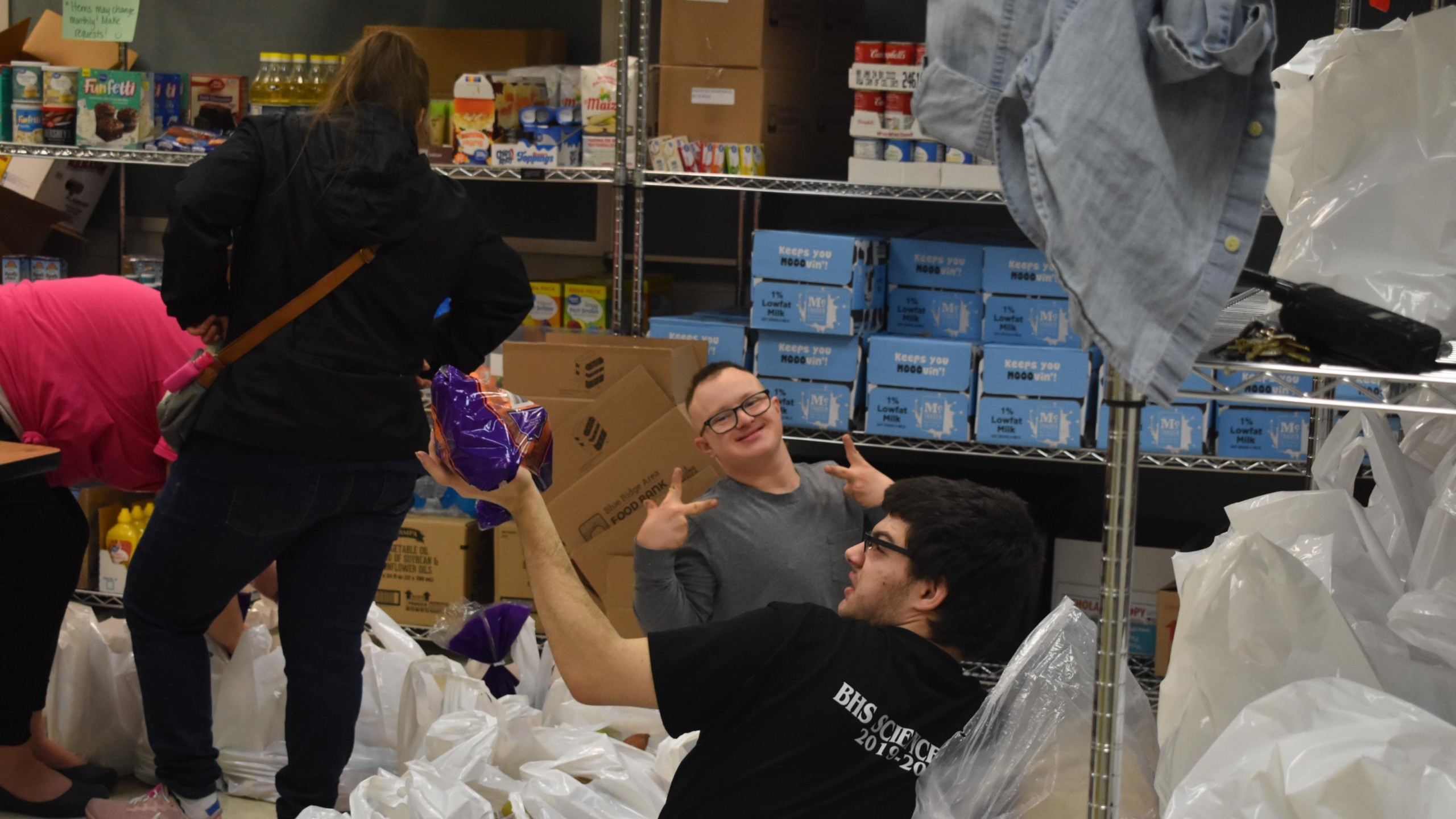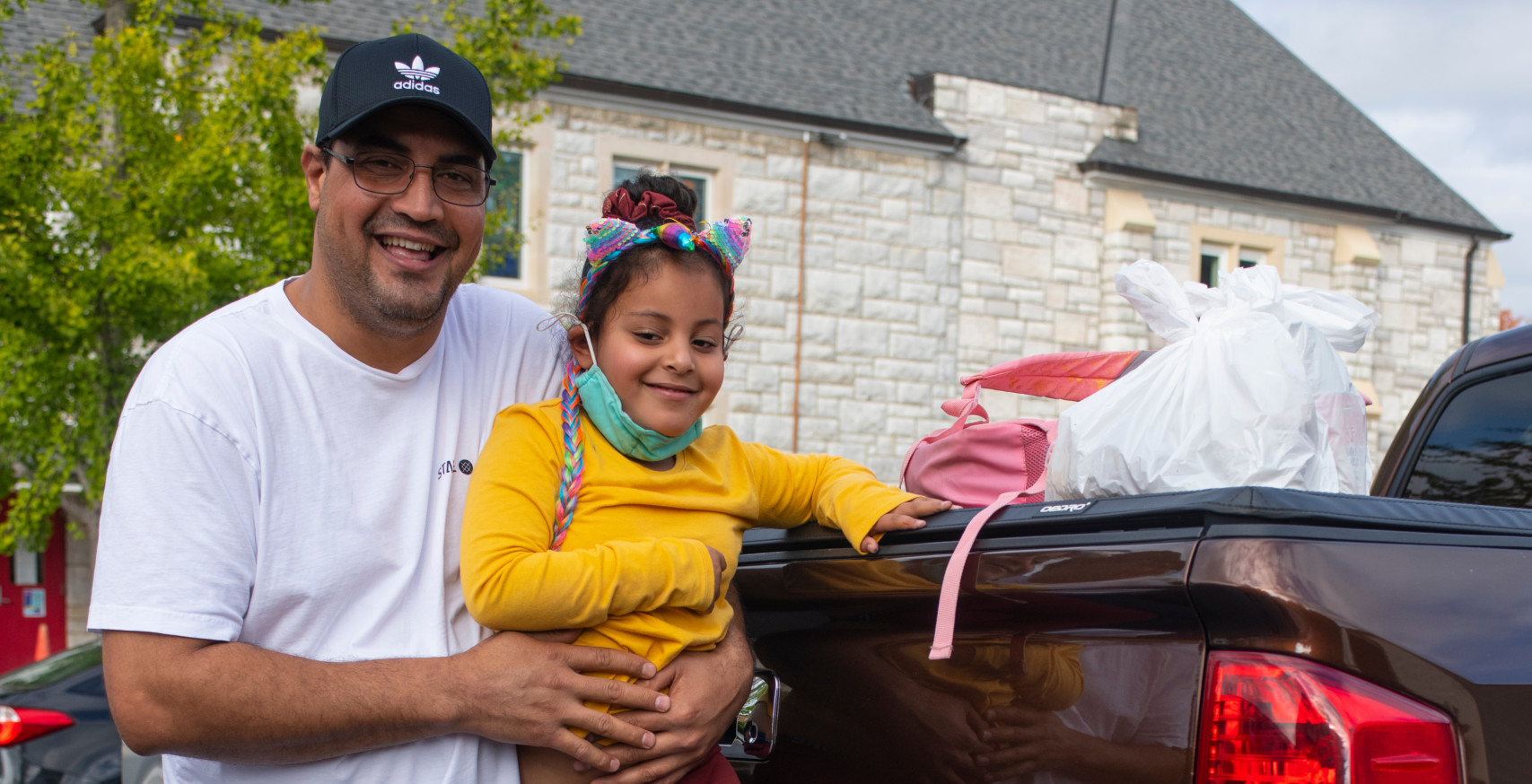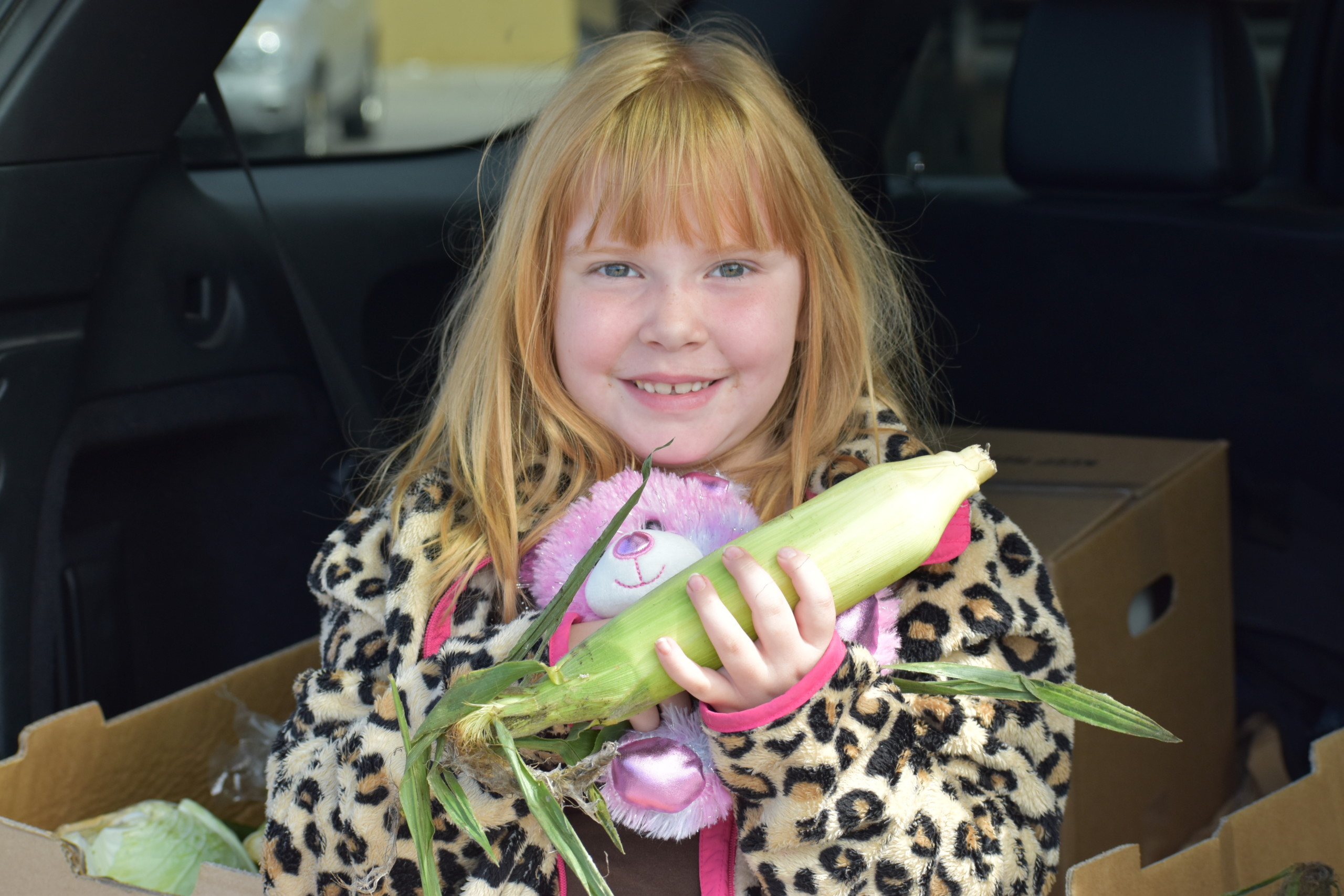[The following is a summary of material presented in a virtual CEO Forum event on March 31, 2022. You can watch the recording here.]
In March 2022, we marked an anniversary we would rather forget: It has been two years since the onset of the pandemic. From March 2020 to the end of December 2021, the Blue Ridge Area Food Bank distributed 53 million pounds of food to people experiencing hunger (the equivalent of about 44.5 million meals)—a major feat to say the least! During this time, we also recorded about 2.6 million visits to all Food Bank program and partner sites.
We would not have been able to accomplish so much, and help so many, without the support of our donors, volunteers, and network of pantry partners.
The pandemic impacted everything and everyone: from seniors to single mothers, to first-time visitors who had recently lost their jobs, and children of all ages. Thanks to federal interventions, a few strategic adaptations, and the support of our community, we were able to keep food flowing into the communities that needed it. With school closures, the Food Bank worked directly with schools to ensure that children would get enough food to sustain them through remote learning days and weekends.
Feeding the future
Fast forward to today. Together with our program and pantry partners, we serve 33,800 children each month on average. As Director of Programs Zach Nissen explains, “working in partnership with 200+ food pantries and 63 diverse school-based and after-school organizations, our shared goal is to meet kids where they are to provide healthy food, every day of the year.”
The inability to achieve nutrition security during infancy, childhood, and adolescence can have life-long impacts on a young person’s physical and mental development. To ensure adequate access to nutrition, the Food Bank has a suite of programs and partners that focus on youth and their families.

Helping children and their families
Mason, age 12, is a seventh grader who visited the Neighborhood Produce Market in Harrisonburg where he helped his mother carry food into their home. On the day we met him, they received more than 25 pounds of produce, plus a chili kit and peanut butter kit.
While our Family BackPack program, Kids Café, and Summer Kids Packs are geared toward younger children throughout the year and at different times of day or different days of the week (after school, weekends, school holidays, summer), the Good Food School Market (GFSM) is designed to boost food access for students in high school and middle school during the school year.
GFSM was originally piloted at Broadway High School and Harrisonburg High School and features a guest-choice distribution model. Students can “shop” for the food they prefer, rather than receiving a pre-selected food box. The program has no income requirements, and all are welcome to participate—including staff—to normalize and destigmatize food assistance in school.
Good Food School Market at Broadway High School
Broadway High School (BHS) started a meal assistance program in 2011, after teachers noticed that some students had a tough time getting enough food to eat at home during the weekends and breaks. In early 2020, BHS and the Food Bank formed a partnership to offer greater food access and more food through GFSM. Then, COVID hit. In that first year, the number of program participants jumped from around 30 to 100. By the 2020-2021 school year, the program was serving more than 300 students.

Filling the gaps
At the height of the pandemic, meal bags and groceries were prepped and delivered to students’ homes thanks to BHS volunteers. Today, the GFSM operates out of a converted classroom where students can “shop” for their preferred food.
School administrators had a moment of panic—how would they feed all those children? With the Food Bank’s help, the school converted a classroom into an in-school pantry space with an area for storage and another for packing and sorting. Each Thursday students come by and choose the food they want to eat over the weekend. Then on Friday, special education students help pack, organize, and deliver food bags to the students’ classrooms.
The result? Kids in the program say receiving this food is “just like Christmas!”
Jennifer Knick, BHS assistant principal and Market co-coordinator tells us, “They love being able to pick out the food that they like to eat. One young guest says that her little siblings enjoy going through the bag when she brings it home each Friday to discover its treasures.”
A mother of three told Jennifer that between rent, electricity, and other big expenses, sometimes it is a struggle for her to figure out how to get food on the table. She said, “You guys don’t understand what a difference it makes for me that I can get this food and that is one less thing on my plate.”
Childhood hunger in Virginia
Prior to the pandemic, 214,000 kids were food insecure in Virginia. Feeding America estimates that an additional 19,000 children (an increase of 9 percent) experienced food insecurity due to pandemic-related economic disruption.
More than 450,000 Virginia students rely on free or reduced-price school meals, but still face food insecurity on evenings, weekends, and school breaks. Federal child nutrition programs became more flexible during the pandemic as a response to the increased need for food assistance. This allowed more children to participate and gave parents the ability to buy food at grocery stores with summer EBT cards. These measures have been extremely effective at keeping child food insecurity low. That’s why Virginia’s food banks, and our partners, are advocating to make them permanent.
In addition to children, what are the food bank’s other most pressing priorities?
We are strengthening and developing our network by investing in our partners so they can make needed changes and expand their reach. Last year, we invested $2 million in grants that helped our partners distribute more fresh produce, purchase coolers and freezers, invest in new mobile food pantry trucks, and update their computers and software.
In addition, we are focused on reaching everyone–including seniors, refugees and immigrants, and rural neighbors. We are working to make essential connections with community leaders, using data to help us discover access barriers, and sourcing culturally significant foods.
Finally, food is medicine. We aim to provide our guests with healthy food that will nurture their bodies and minds. We are partnering with healthcare organizations to provide nutritionally appropriate food to food-insecure patients, using science to determine the nutrition density of the food we are acquiring, and distributing more healthy produce, whole grains, and lean protein to people across our service area.

Expanding our reach
Robinson and his daughter stopped by a Neighborhood Produce Market to pick up some food for his family. Robinson, who immigrated to the U.S. from the Dominican Republic in 2006, felt gratitude for the abundance of fresh fruits and vegetables available that day. “This food is so important,” he said.

